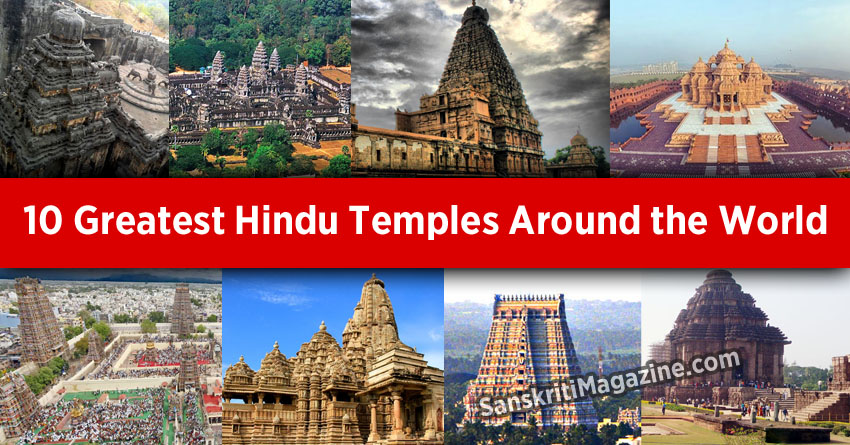A Hindu temple is a place of worship for followers of Hinduism. It can be a separate structure or a part of a building. A feature of most temples is the presence of murtis of the Hindu deity to whom the temple is dedicated. They are usually dedicated to one primary deity, called the presiding deity, and other subordinate deities associated with the main deity. However, some temples are dedicated to several deities, and some have symbols instead of a murti. Hindu temple architecture has evolved greatly in the last 2000 years, starting with cave temples, to monolithic rock-cut temples and freestanding structural temples made of stone.
Here is a list of 10 greatest and most beautiful Hindu temples around the World, which stand gloriously, pouring blessings over the mankind:
10. Virupaksha Temple, Hampi, India
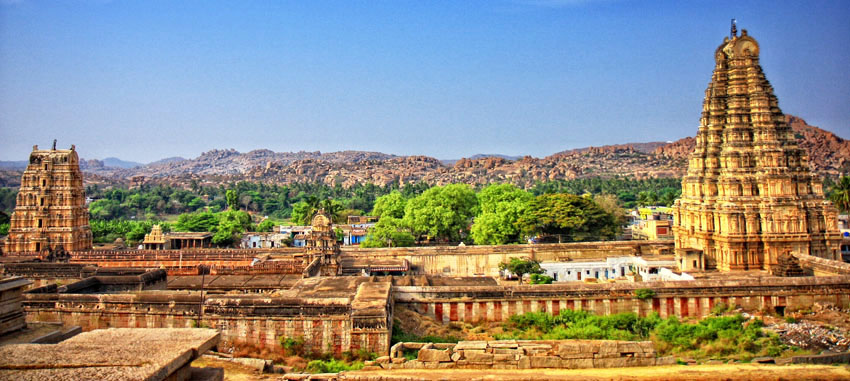
Believed to functioning uninterruptedly ever since its inception in the 7th century AD, Virupaksha temple is the oldest and the principal temple in Hampi. The temple is dedicated to Lord Shiva, known here as Virupaksha, as the consort of the local goddess Pampa who is associated with the Tungabhadra River. Temple is noted for its architecture and has been listed among the UNESCO World Heritage Sites. This magnificent structure consists of a layered tower of elaborate, hand-carved friezes populated by a bevy of Hindu deities and symbols. Read more about Hampi
9. Ranganathaswamy Temple, Srirangam, India
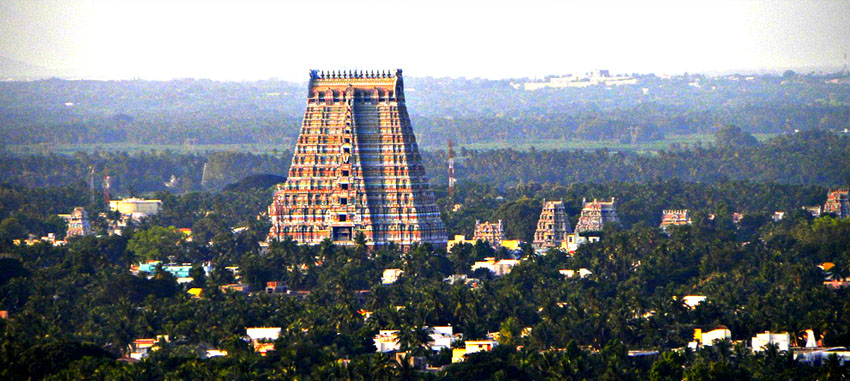
Sri Ranganathaswamy Temple is one of the most illustrious Vaishnav temples in the country, dedicated to Hindu God Vishnu. Constructed in the Dravidian style of architecture, the Temple Complex is massive in scale and spread over 156 acres (63.131 hectares). According to some scholars, this makes Sri Ranganathaswamy Temple the largest Functioning Temple in the World and is often found ranked amongst the largest religious complexes of the world.
8. Brihadeeswarar Temple, Thanjavur, India
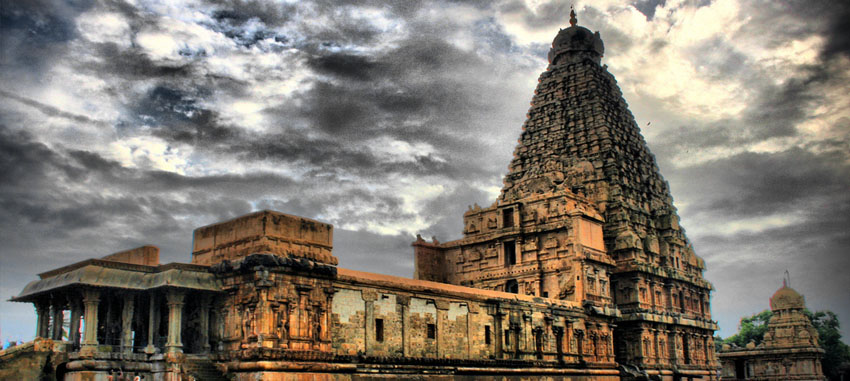
The Brihadisvara temple at Tanjavur marks the greatest achievement of the Chola architects. Known in the inscriptions as Dakshina Meru, the construction of this temple was inaugurated by the Chola King, Rajaraja I (985-1012 CE). The temple is part of the UNESCO World Heritage Site known as the “Great Living Chola Temples”.
7. Sun Temple, Konark, India
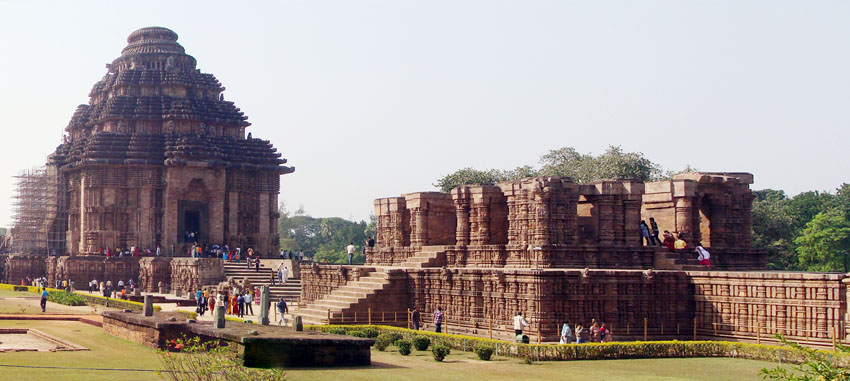
On the shores of the Bay of Bengal, bathed in the rays of the rising sun, the temple at Konarak is a monumental representation of the sun god Surya’s chariot. The temple looks like a chariot which stands on 24 wheels, pulled by 7 horses. Often referred to as the Black Pagoda, the temple was built in 13th Century and is famous for Kalinga style of architecture. Due to its beauty & attraction it features in the Seven Wonders of India. Read more about Konark
6. Kailasa Temple, Ellora, India
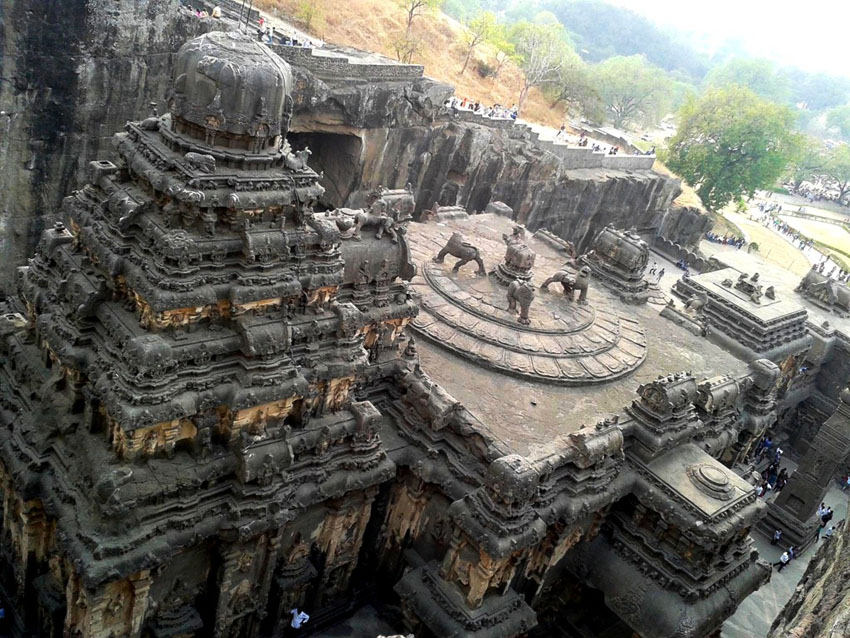
Kailasa Temple is the world’s largest monolithic structure carved out of one single rock. Considered as one of the most astonishing ‘buildings’ in the history of architecture, Kailasa Temple measures about 60 feet tall and 200 feet wide. The Temple dedicated to Hindu Lord Shiva and it was built in 8th century by the Rashtrakuta king Krishna I. It is estimated that about 400,000 tons of rocks were scooped out over a period of 20 years to construct this monolithic structure.
5. Meenakshi Temple, Madurai, India
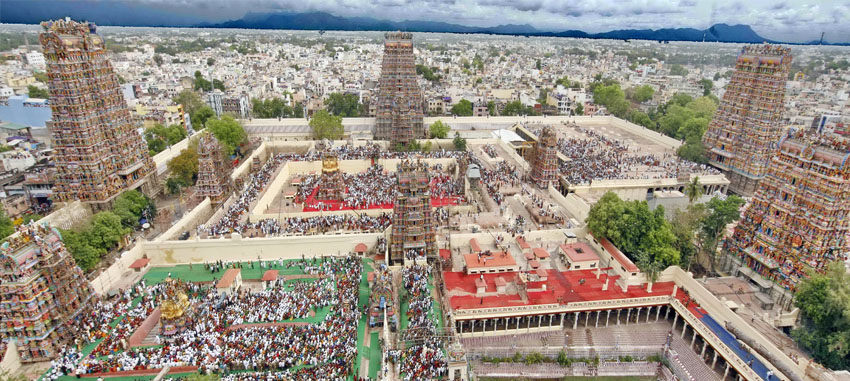
The Meenakshi Amman Temple is one of the most important Indian Hindu temples, located in the holy city of Madurai. It is dedicated to Parvati, known as Meenakshi, and her consort, Shiva, here named Sundareswarar. There are an estimated 33,000 sculptures in the temple. It was on the list of top 30 nominees for the “New Seven Wonders of the World”. The temple has been mentioned for the last couple of millennia, though the present structure was built in the early 17th century. Read more about Meenakshi Amman Temple
4. Khajuraho, Madhya Pradesh, India
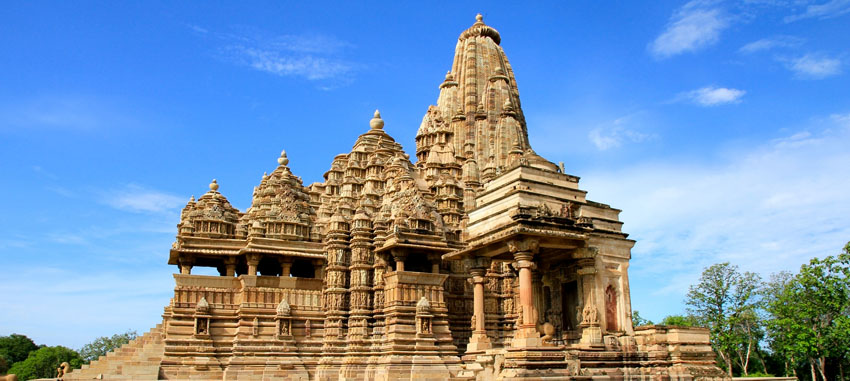
The temples at Khajuraho were built during the Chandella dynasty, which reached its apogee between 950 and 1050. Today only about 20 temples remain; they fall into three distinct groups and belong to two different religions – Hinduism and Jainism. They strike a perfect balance between architecture and sculpture. The Khajuraho temples are known worldwide for erotic sculptures of Kamasutra on the temple walls and are considered to be one of the seven wonders of India. It was enlisted as a World Heritage Site in 1986.
3. Angkor Wat, Cambodia
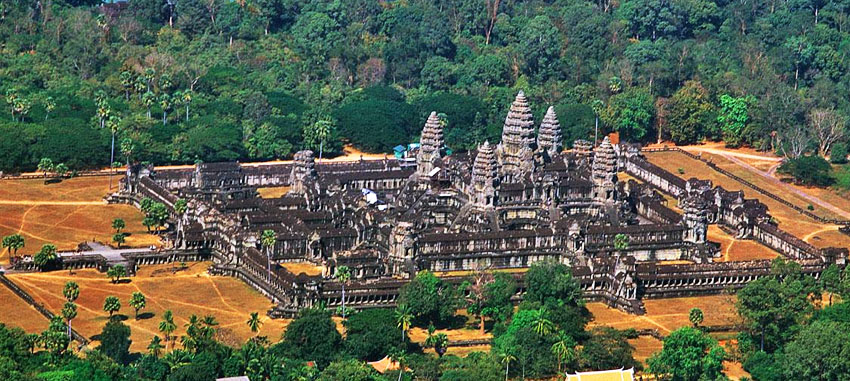
Angkor is located in modern day Cambodia and was once the capital of the Khmer Empire. Built between roughly A.D. 1113 and 1150, and encompassing an area of about 500 acres (200 hectares), Angkor Wat is one of the largest religious monuments ever constructed. Its name means “temple city.” Originally built as a Hindu temple dedicated to the god Vishnu, it was converted into a Buddhist temple in the 14th century, and statues of Buddha were added to its already rich artwork. New Findings
2. Prambanan, Indonesia
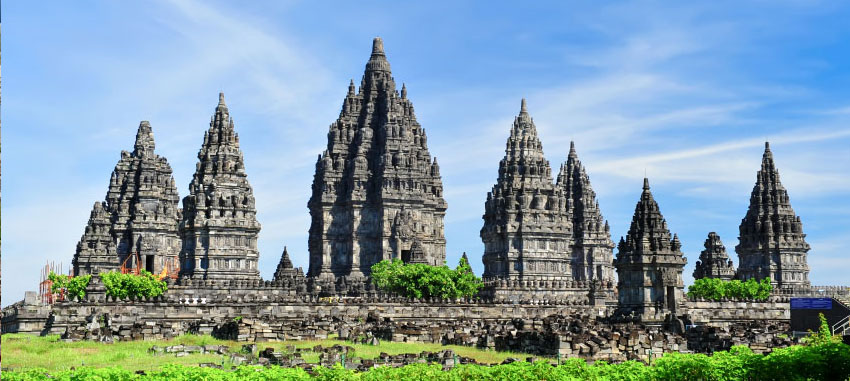
Prambanan Temple Compounds is the largest Hindu temple complex in Indonesia and one of the largest Hindu temples in south-east Asia. It is characterized by its tall and pointed architecture, typical of Hindu temple architecture, and by the 47m high central building inside a large complex of individual temples. The temple complex dates from the 9th century. The interior consists of more than 200 tower shrines that surround three inner temples dedicated to the three great Hindu divinities (Shiva, Vishnu and Brahma).
1. Akshardham Temple, Delhi, India
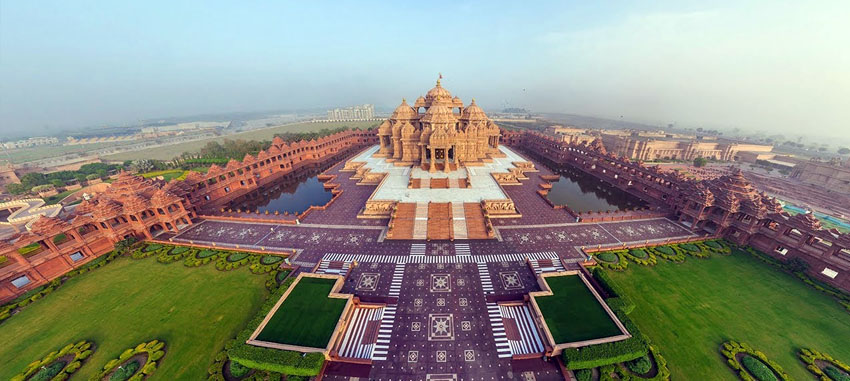
Counted among the world’s wondrous houses of worship, Akshardham Temple in New Delhi showcases the blend of technical modernity with traditional architectural styles. Akshardham Temple was opened in 2005 after 300 million volunteer hours went into its construction. Covering an area of over 8,000 square meters, the grandeur and wisdom behind the temple is best when experienced. More details about Akshardham
There are countless amazing temples, monasteries, and sacred places of Hinduism scattered throughout Asia. If your favorite temple is not included, it is not a slight – We welcome your suggestion in the comment section below.

